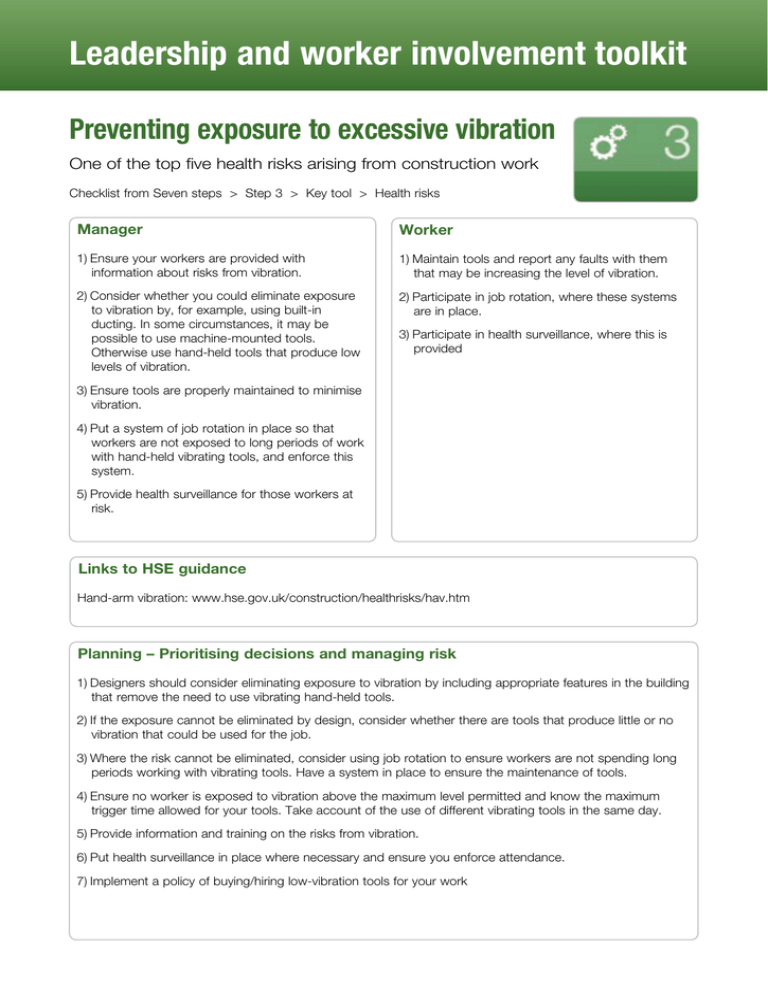Preventing exposure to excessive vibration
advertisement

Leadership and worker involvement toolkit Preventing exposure to excessive vibration One of the top five health risks arising from construction work Checklist from Seven steps > Step 3 > Key tool > Health risks Manager Worker 1)Ensure your workers are provided with information about risks from vibration. 1)Maintain tools and report any faults with them that may be increasing the level of vibration. 2)Consider whether you could eliminate exposure to vibration by, for example, using built-in ducting. In some circumstances, it may be possible to use machine-mounted tools. Otherwise use hand-held tools that produce low levels of vibration. 2)Participate in job rotation, where these systems are in place. 3)Participate in health surveillance, where this is provided 3)Ensure tools are properly maintained to minimise vibration. 4)Put a system of job rotation in place so that workers are not exposed to long periods of work with hand-held vibrating tools, and enforce this system. 5)Provide health surveillance for those workers at risk. Links to HSE guidance Hand-arm vibration: www.hse.gov.uk/construction/healthrisks/hav.htm Planning – Prioritising decisions and managing risk 1)Designers should consider eliminating exposure to vibration by including appropriate features in the building that remove the need to use vibrating hand-held tools. 2)If the exposure cannot be eliminated by design, consider whether there are tools that produce little or no vibration that could be used for the job. 3)Where the risk cannot be eliminated, consider using job rotation to ensure workers are not spending long periods working with vibrating tools. Have a system in place to ensure the maintenance of tools. 4)Ensure no worker is exposed to vibration above the maximum level permitted and know the maximum trigger time allowed for your tools. Take account of the use of different vibrating tools in the same day. 5)Provide information and training on the risks from vibration. 6)Put health surveillance in place where necessary and ensure you enforce attendance. 7)Implement a policy of buying/hiring low-vibration tools for your work To download this checklist, complete the Exposure to excessive vibration case study, see: Seven steps > Step 3 > Key tool > Health risks Record your site briefing here Who has been briefed: I confirm that I have briefed these people on the key points of the LWIT Step 3 Key tool on preventing exposure to excessive vibration. Signed off by Concerns raised at the briefing Changes implemented or actions planned The Leadership and worker involvement toolkit is aimed particularly at small and medium sized businesses and is designed to help improve your health and safety and bring additional benefits to your business performance and productivity. See: www.hse.gov.uk/construction/lwit/ Developed by the construction industry’s Leadership and Worker Engagement Forum. Hosted by HSE 08/11




